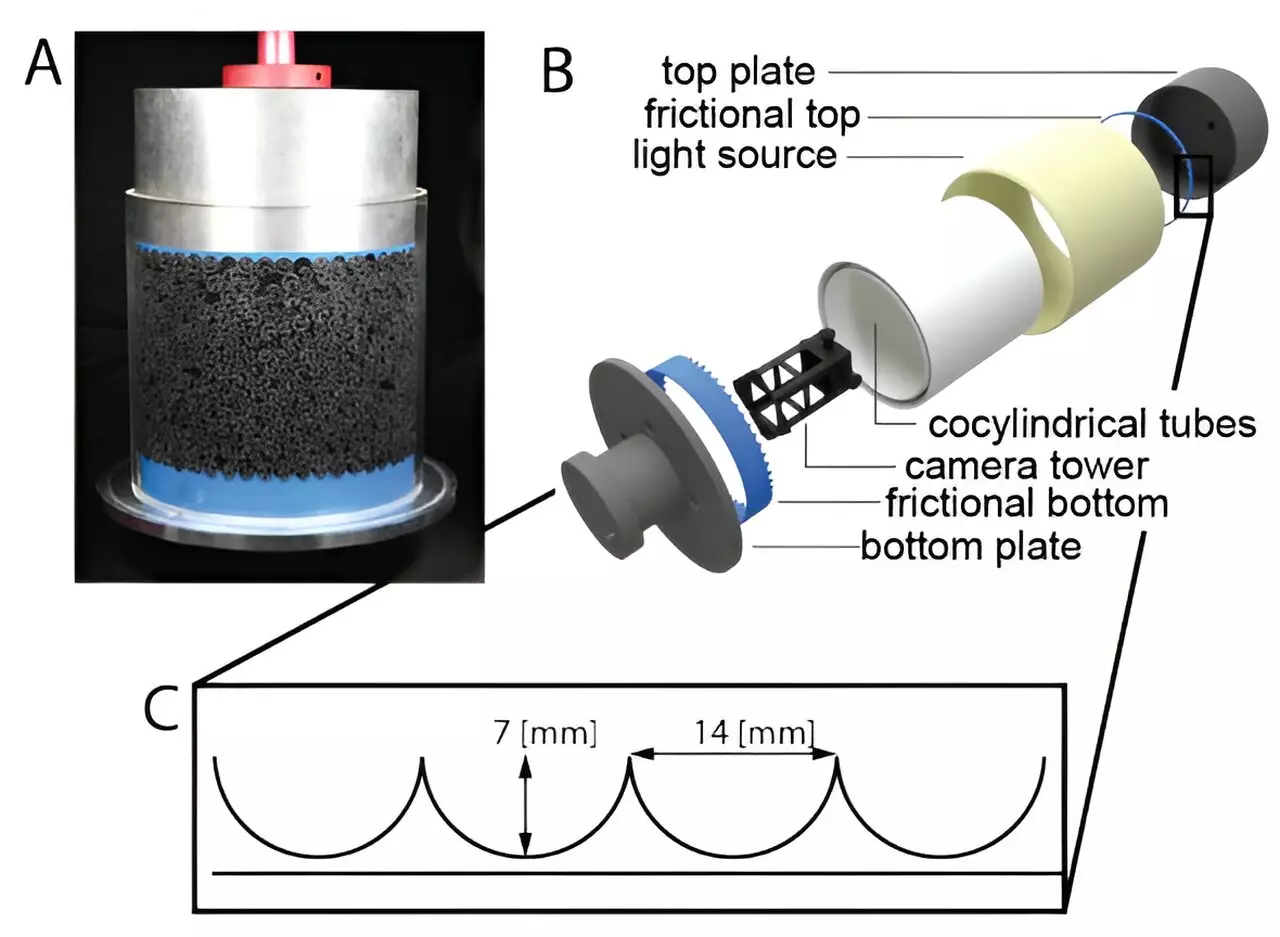Granular materials, such as sand, exhibit intriguing properties that differ depending on their context. While on the beach, sand appears solid and difficult to compress, it behaves like a liquid when placed in an hourglass. These distinct behaviors make granular materials a subject of interest for researchers looking to explore their potential applications.
Recently, researchers from the University of Amsterdam and Santiago in Chile have made a significant breakthrough in designing new granular materials with unique properties. Unlike traditional granular materials that are challenging to compress, these novel materials can be easily compressed. This achievement opens up exciting possibilities for applications like shock dampening.
A prime example of a granular metamaterial is the tetrapod structures found along the coast of Japan. Comprising enormous four-legged concrete blocks, tetrapods serve to prevent erosion of coastal structures. Their unique design makes it difficult for them to flow, thus effectively maintaining their position and fulfilling their intended purpose of shoreline protection.
Daan Haver, the first author of the groundbreaking study, explains the concept of metamaterials in designing materials with desired responses. By manipulating the geometry of materials, researchers can achieve specific properties. In the case of granular materials, the researchers created grains that shrink radially under external pressure, allowing for easy compression and improved flow characteristics.
The new granular materials developed by the researchers show promising potential in shock dampening applications. By introducing these innovative grains into a packing, the energy transfer from a moving object, such as a metal disk, becomes more consistent and homogeneous. This improved energy dissipation could have significant implications for scenarios requiring impact absorption, such as in speed skating races.
The recent advancements in designing granular materials with tailored properties showcase the versatility and potential applications of these unique materials. By leveraging the research findings from the University of Amsterdam and Santiago, scientists are paving the way for exploring new avenues in shock dampening and material design. The fascinating properties of granular materials continue to intrigue researchers and hold promise for diverse fields ranging from engineering to materials science.


Leave a Reply